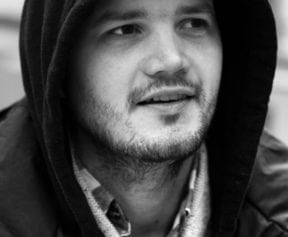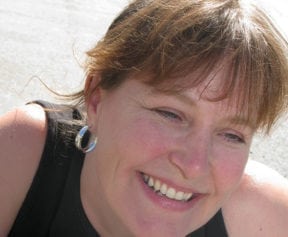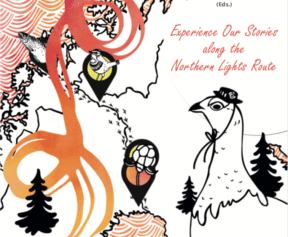Frans Kerttu’s story is written down and edited by the daughter’s son.
Here, you can listen to the story told by Lars Suo (Lars tell’s the story both in Finnish and Swedish). This story has also inspired VisaNordica (photo), listen to the song here.
My grandfather, Frans Kerttu, was a farmer, sheriff’s deputy and during many years a fish foreman at Kukkolaforsen. In the beginning of the 20th century there was a dairy in Karungi, the building that later became a butchery/slaughterhouse. The milk from , e.g. Kukkola was driven to the dairy by horse. The building is still there but is used as a storehouse. Frans was interviewed by his son Axel Kerttu and his stepson Uno Hanno, probably around the year 1960. In the interview, which was recorded on tape, he tells on Tornedal Finnish about a bloody crime that happened about 100 years ago where he suddenly and unexpectedly was forced to enter as sheriff’s deputy.
One day in 1915 Frans was on his way with horse with milk to the dairy. Somewhere near Wallström’s, just north of the former school in Upper Kukkola, he was met by Johan Bucht and a neighbour to him, Iisko Lähdet. The road was at that time close to Wallström’s farm.
Frans tells: I was on my way with a load of milk to Karungi. Jussa Bucht comes against me together with Lähteen Iisko. They yell that I have to stop. Buch says “Someone has murdered my hag and in a horrible way!”.
“Stop rambling and get away,” says Frans. But Iisko Lähtet interrupts and says that everything is true. ”You have to go and see for yourself”.
“Well, is it really true?” Frans asks. It all sounds so unbelievable it is difficult to take it seriously. But I had to go and ran after my horse, which had continued with the load towards Karungi. Afterwards I drove to Wallström and asked him to drive the milk load to the dairy. I then went to my home with Buch and Iisko Lähdet. I called the chief constable and asked what I should do. The chief constable said that you must go there to begin the investigation.
I went to Bucht’s farm and began to investigate. The body had been found. She had been killed in the evening and the body had been dragged to the haybarn and been covered with hay. Bucht had waited during the evening that the housewife should come back from the cowshed but she never showed up. The housewife hadn’t walked to the daughter who lived nearby either. Then a group began to search for her. They searched everywhere, peeked into wells and all other possible places until midnight. But they found nothing.
There was suspicion against the maid, who had a bad relation to the housewife. Bucht had said that the maid had been wearing other clothes in the evening than she had the next morning.
In the morning the maid had gone to the cowshed as usual. When she came back she denied that she knew anything about what had happened and behaved as nothing had happened. But it turned out that someone had gathered a pile of hay next to the cowshed wall. Those who where searching for the housewife in the morning had found the pile and wondered why it was there and when they began to dig through it they found the housewife’s corpse. In her mouth there was a wisp of hay that probably had been put in there due to her rattling when she had been killed. Everything had frozen during the night and looked appalling. There was blood everywhere. The housewife’s head was covered with scars since the killer had chopped an axe through the skull but also in the forehead and in the neck. Thereafter the victim had been dragged to the barn and the floor had been cleaned accordingly but when I looked closely I could se blood stains on the floor.
Well, I began to question the maid. She denied that she had done it. I took her to the chamber and told her “start taking off your clothes, garment by garment”. I wanted to see if she had any blood stains on her clothes. She initially denied but I insisted on that she had to take off all of her articles of clothing, but there were no blood stains on them. But then, when she pulled out the garters/suspenders, there was a blood stain on one of them.
I began to talk about the opportunities for her to get peace of mind if she confessed to what she had done, and then she began to submit and acknowledge that she had killed her housewife with the axe.
The maid had gone to the barn to milk and then the housewife had showed up. The maid said that the housewife had started to yell at her and then she had become so furious that she had quickly stood up. There was an axe in the hall and she rushed after it. The housewife was standing watching the cows and it was then that the maid hit her in the head with the axe and the housewife fell to the ground. Her bloody clothes had been put in the barn pot where they later could be discovered.
Eventually, the constable Bergström came and he made a new investigation and wrote a record of it. Then he ordered me to bring the maid to prison. He gave “deportation” as it was called and I had to bring her to Haparanda. The body was then still in the barn, but accordingly she was taken to the house on a board. The constable said that the body should neither be cleaned nor touched in any way. It had to remain as it was until tomorrow when the doctor would come.
The constable demanded that doctor Montell should dissect the body. He was the distric physician. I was to serve as an assistant. A lot of people had gathered but doctor Montell said that nobody could be inside the house at the moment. The doors were locked. When I had heard from Bergström that I had to go along, I brought a liter of cognac. I thought I’ll take a sip of it since I had to do this. When we started, I told Montell to take a sip from the bottle. But Montell said I absolutely should not do it “You should not touch that bottle.” He looked at my hands and made an assessment that they were healthy and free from wounds.
The doctor showed where I would cut and saw. He even had saws with him. It was just to start sawing. Ribs and skull.
Autopsy began sometime at ten a.m. and lasted for several hours. It was also required that there was a protocol writer and that was constable Bergström, but when I pulled the sheet from the body, Bergström began to vomit quite terribly. It was like green foam. He became so powerless that he almost fell off the chair. He said he could not do anything. Because of that we had to pick up Söderholm from Karungi. Bergström had to travel back to town.
The old woman was in pieces. All intestines were picked out and examined. Eventually, the doctor said that everything was finished. He asked for hot water so that he could wash his hands. To me the doctor said “Now, pick up all the parts and sew them a little bit together. And then put her in the coffin.” Bucht had ordered a coffin from Haparanda and it had already been delivered with the train and been picked up from the train station. Montell went to Karungi along with Söderholm who went home and Montell took the train to Haparanda. I continued to put the old woman together.
She lay on the table and everything had been removed from her chest, the skull had been cut up and the brain had been removed. I put her back together and washed my face and then sew everything together. But when I had put all pieces together I noticed that I had forgot to put the brain back in place. It was still lying on the table. Well, I opened the chest a little bit and put it in there as if it would have been a chest pocket and said “You’ll be fine with it in there.” I was completely alone when I did this and it was in the middle of the day.
When I had put everything back, sewn together the body and washed it, I put on the clothes she would be buried in and then put her in the coffin. When everything was ready and in order, I opened the door and said that now you can come and see. Since only her face was visible there were questions about whether she really had been cut open? I said that she most certainly had. She had been in pieces with all the intestines on the table.
It felt strange that you in a case like this had to dissect the body into small pieces. I had asked Montell if this was really necessary since she had been hit in the head but Montell simply answered that this is what you have to do.
The protocol consisted of several pages since everything had to be examined so carefully and everything had to be noted. All wounds were carefully measured, both length and depth. In the back of the head there was a wound and on other parts of the skull there were injuries.
The maid was from Finland but I don’t remember what place. Still it became known but I don’t remember from where she was.





